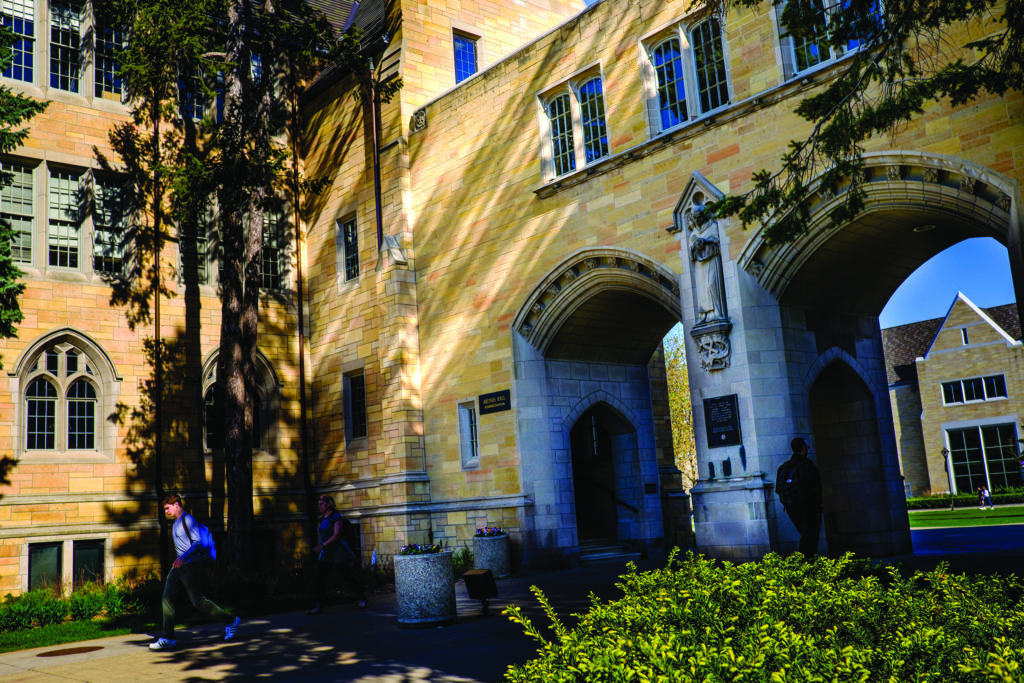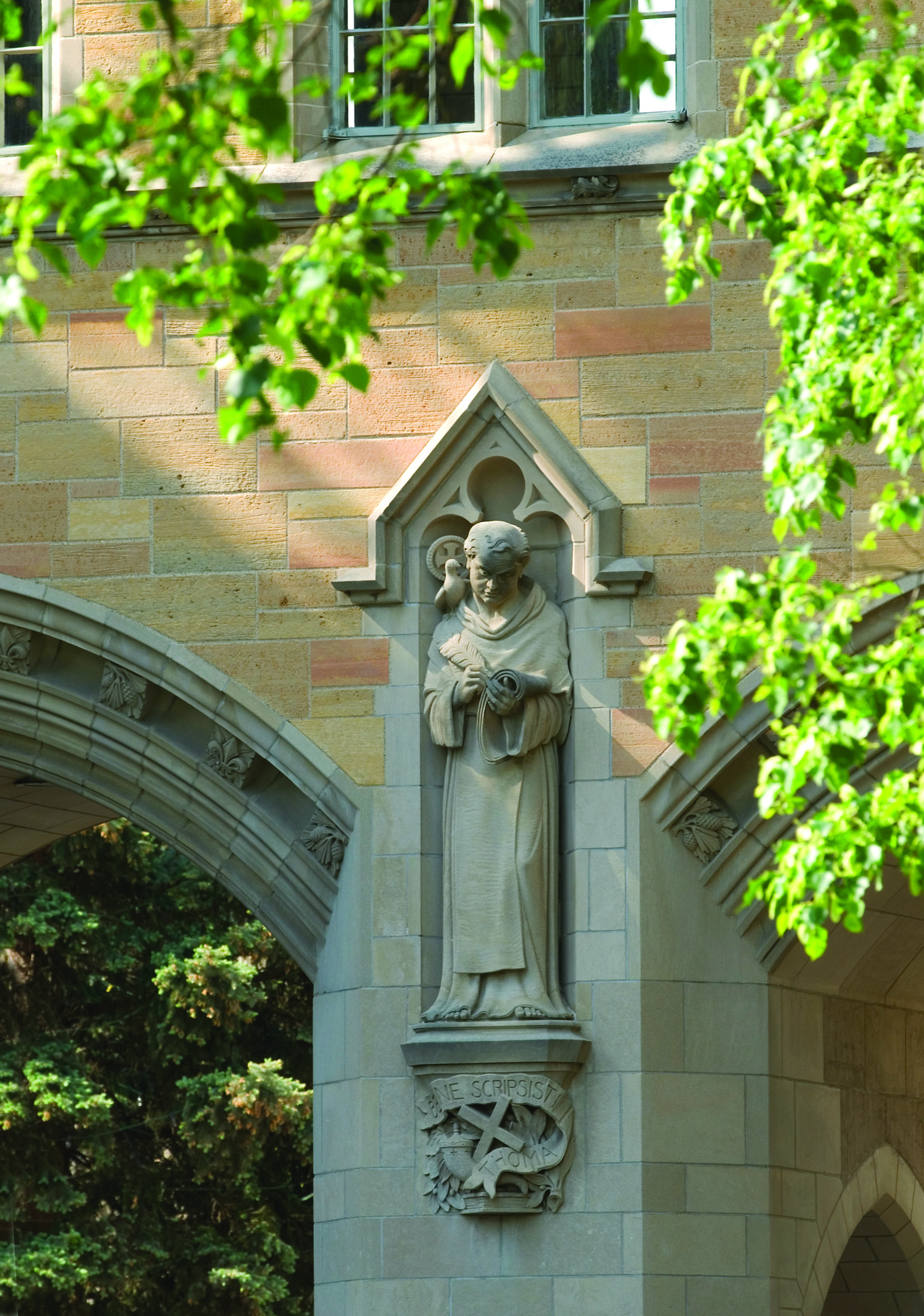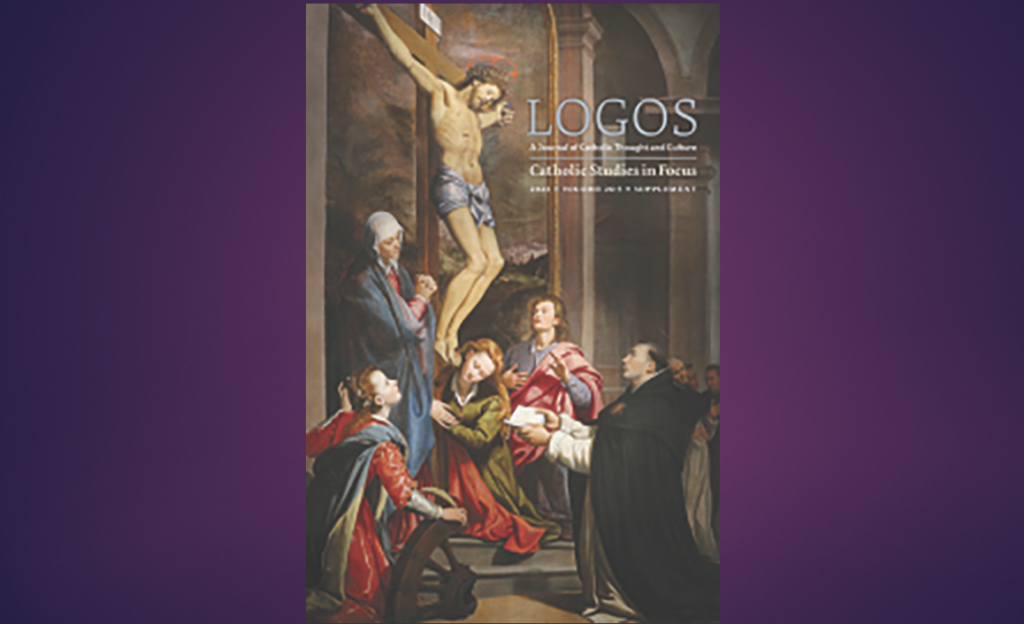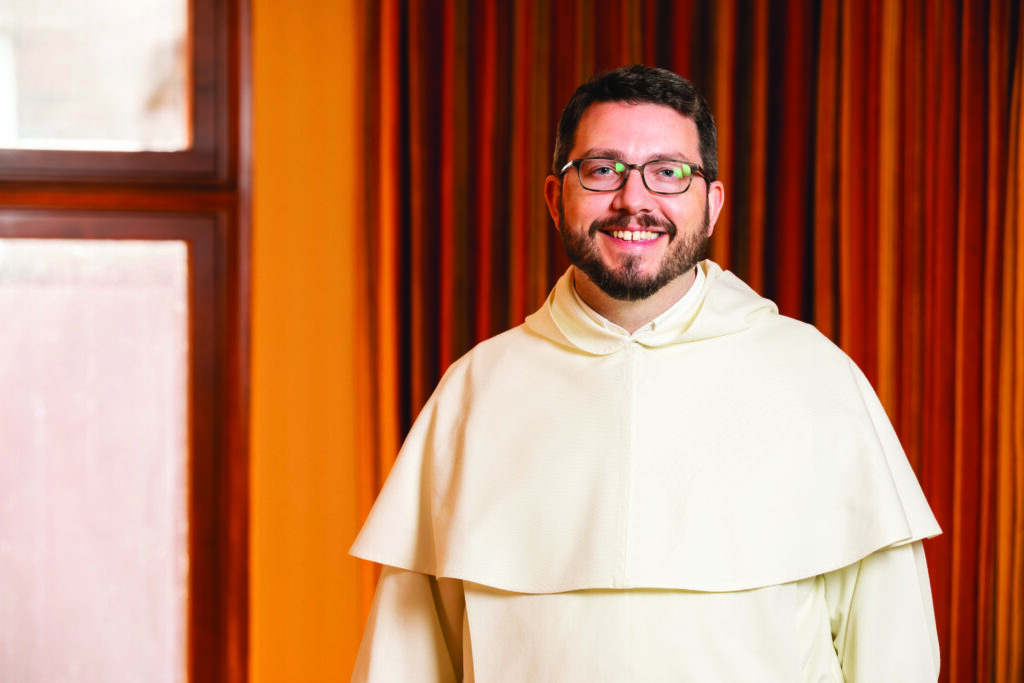Emma Miller is a current senior at the University of St. Thomas, studying biology, Catholic studies and philosophy. After hearing about Ave Maria University’s undergraduate essay contest from Dr. William Junker, she submitted her paper, “St. Thomas of the Creator: The Return to the Savior Through Recognition of the Creator.” Miller received first place and presented an extended version of her paper at a conference at Ave Maria University in February.
Should St. Thomas Aquinas have taken a religious name as particularly done in the Carmelite order, it would have been “Thomas of the Creator.” First articulated by G. K. Chesterton, and later echoed by Josef Pieper and Joseph Ratzinger, this claim affirms the principal foundation of Aquinas’ writings, namely, that God is the creator. All treatments of identity, morality and teleology of the human person given by Aquinas emerge out of his understanding that man’s primary relation to God is that of a creature. In contemporary thought, this worldview of the creator-creation relationship has been outmoded by scientism and self-creation. Through the discoveries of evolutionary biology, the stance that Darwinian theory provides the complete narrative of human origins displaced the classical treatments of the human person as made in the image of God.
However, the loss of historical “Adam” entailed the loss of the Fall, and thereby omitted the need for the savior. There is no doctrine of salvation without the doctrine of original sin, thus, to fill the vacuum that opened through the loss of the creator, contemporary thought has looked to self-creation and societal order for redemption. Only when one returns to a disposition of receptivity in one’s primary identity as creature can the need for salvation in Christ be recognized. Thus, Aquinas serves as a spiritual teacher in our age, as he sets the gaze of the world back upon the creator that we may find the savior. This paper will trace the issues of human identity and the relationship between divine and human agency as treated within the contemporary age resultant from the abandonment of the creator, and subsequent to each, it will reveal how Aquinas answers these issues by guiding our gaze back to the creator.
The first issue pertains to human identity. In his book Three Rival Versions of Moral Enquiry, Alasdair MacIntyre sets out the three dominant moral and intellectual traditions found within the Christian, modern and postmodern eras of Western culture.
The Christian narrative recognizes man’s creation, Fall and salvation, thereby placing man’s primary identity in being a creature made in the image of God. The modern narrative retains creation only to the extent that deism affords yet eschews the other two; man is born good yet is corrupted by social institutions, thus, redemption emerges when man, equipped with rational agency, regains his independence through innovation. Here, man’s fundamental identity lies in being a rational agent. The postmodern narrative goes further, casting off creation and viewing human interactions through the lens of power structures. Now, one’s identity is neither in the image of God nor rational agency, but as a part of a group identity inherently set against others.

Since “who you are” is uniquely tied to “what you do,” the novel judgments of human identity led to the shifted perspective of morality. The conflicting moral ideologies of modernity gave rise to the postmodern claim that morality amounts to nothing more than a social construct. Aquinas speaks into this issue, resolving both the question of identity and morality in one coherent point – that because virtue is tied to who man ought to be, it is inseparably tied to human identity. Made in God’s image by reason of intellectual nature, our identity reaches fulfillment as we imitate God in his intellectual nature. Thus, for Aquinas, the identity of the human person lies in the interplay of both being made in the image of God and realizing this image within him as he both grows in virtue and receives divine grace to become more like Christ.

Secondly, Aquinas gives answer to the relationship of divine and human agency. In the modern narrative, divine agency amounts only to the “watchmaker God,” impersonal and removed from creation. This view of the universe’s complete autonomy was brought to its extreme in postmodernity’s nascency, where “God is dead.” Yet for Aquinas, God is “ipsumesse subsistens” – creation cannot be but wedded to the creator, for while all things partake in being, they partake in their creator who is “I AM.” Creation, therefore, is not simply a one-time event, but an ongoing act. By affirming God’s creative act, Aquinas reveals that God is not aloof to God’s work, as posited by modernity, but involved in every aspect of it.
Yet God’s nearness to his creation goes further. He not only weds himself to creation through sustaining all things in existence, but “becomes one flesh” with it in the hypostatic union. Thus, countering modernity’s deist narrative of divine agency, Aquinas upholds the nearness of the creator to his creation through the Incarnation. And countering the postmodern claim of God’s death, Aquinas shows forth that indeed God did die – upon the Cross – yet he also rose from the dead and offers this new life to all who ask for it. Thus, once more, Aquinas brings us face to face with the savior.
With regard to human agency, moreover, both modernity and postmodernity agree that man is autonomous, independent and set to bring about his own redemption through work. For Aquinas, however, man is fundamentally dependent, for man is fundamentally a creature. Yet this dependence on divine agency does not annihilate human agency; rather, divine and creaturely agency cooperate. With regard to living creation at large, God invites creaturely agency to partake in its own creation through evolutionary speciation. With regard to the human person, God fashions man as a creature not yet finished, inviting him to participate in his own completion through intellection and love. This is particularly seen in his plan of salvation, for, as Augustine stated, “God did not will to save us without us.” Thus, Aquinas would say that the inclination of modern and postmodern man toward redemption through human agency, while surely disordered, does not have to be expunged completely. Instead, it must be conformed to the divine will that the two may act together. Paradoxically, this conformity does not restrain man, but gives rise to the fullness of freedom. Sanctity, therefore, is not resultant of human achievement, but the meeting of human weakness and divine grace.
By rooting his treatment of the human person within man’s primary relationship with the creator, Aquinas gives the narrative of the Fall and original sin its proper footing, out of which recognition of the savior is made possible. Through addressing human identity and agency from within the creator-creature relationship, he serves as spiritual guide, inviting us to see the work of the savior in the world.
This story is featured in the spring 2022 issue of Lumen.







